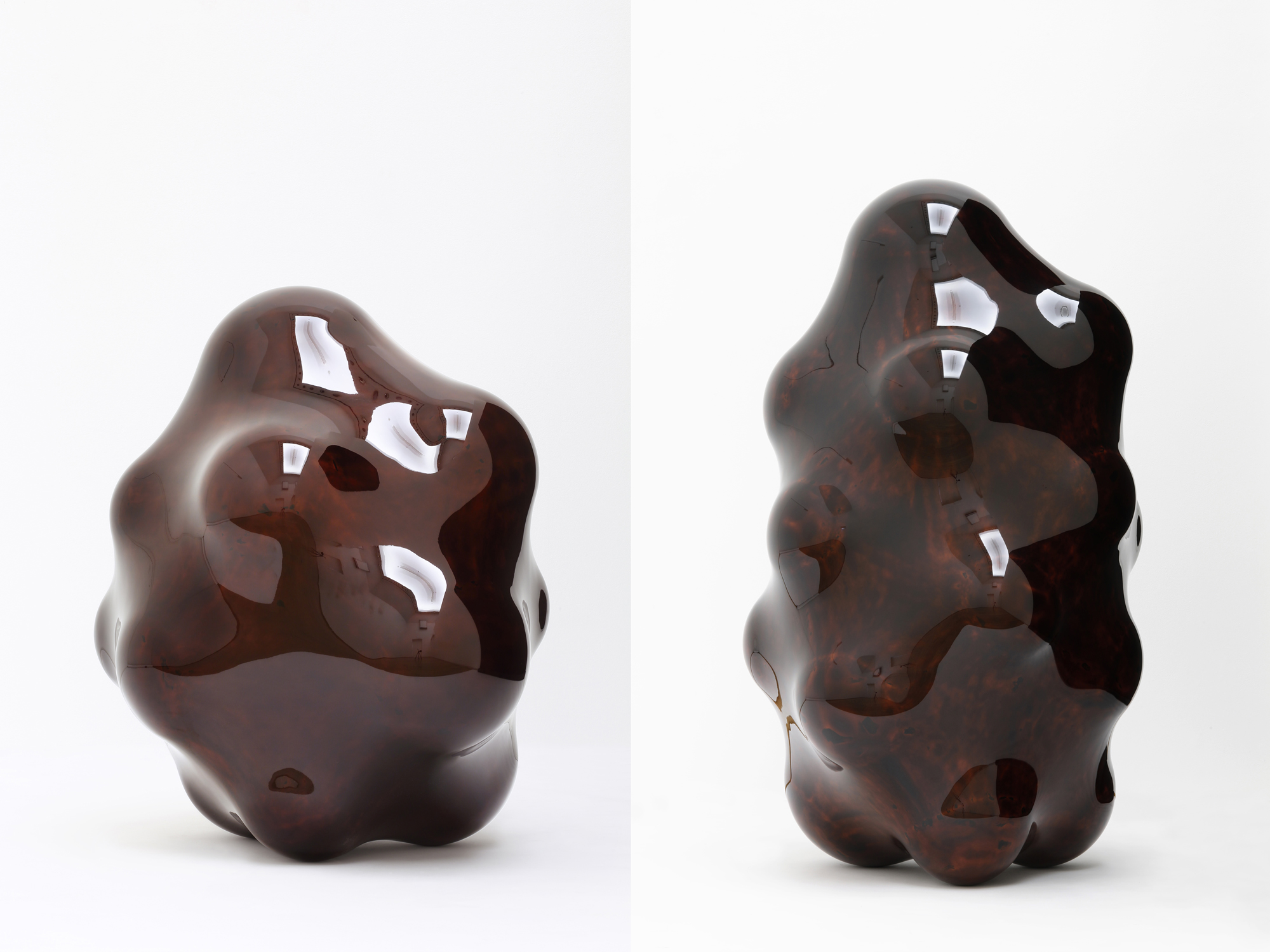Graduating in 2008 with a master of fine arts from Kyoto City University of Arts, contemporary urushi lacquerware artist Genta Ishizuka held his first international solo exhibition in London last year. This year he received Kyoto City's Best Young Artist Award; then the prestigious and lucrative Loewe Foundation Craft Prize for craft and design excellence. Around 15 of his recent works are now on show in "Polyphase Membrane," a solo exhibition at Artcourt Gallery, in Osaka, until Sept. 21.
Ishizuka established himself after graduation with black-and-red lacquer panels decorated with knife blades, needles, paper clips, and washers. For him, the shiny and reflective metal objects were a contemporary corollary to the more traditional materials of lacquer decoration like mother-of-pearl and precious metal powders. Comparable works on show are the black lacquer panels "Poly phase" (2019) and "Dual Phase #1" (2019), both of which utilize silver and gold washers arranged into clusters, with the larger ones at center and the smaller ones on the periphery. The visual effect is one of dark surfaces that are both lustrous and absorptive, while the decorative washer configurations suggest cosmic explosions and dispersion.
Ishizuka was awarded the Loewe Foundation Craft Prize for "Surface Tactility #11" (2018), one of a series of works that he began in 2015. Basing the works on the shapes of mesh bags filled with oranges, he recreated the forms in wire and Styrofoam balls, covered them in linen as a support, and applied multiple layers of kanshitsu (dry lacquer) over several months — a technique used in Japan from the seventh century to reproduce Buddhist sculpture from China. Ishizuka then polished the surfaces to glossy, seamless lacquer membranes. He conceives of the application of lacquer not as a final process that covers a supporting structure, but as surface accretions generating the sculptural form enclosed within.



















With your current subscription plan you can comment on stories. However, before writing your first comment, please create a display name in the Profile section of your subscriber account page.